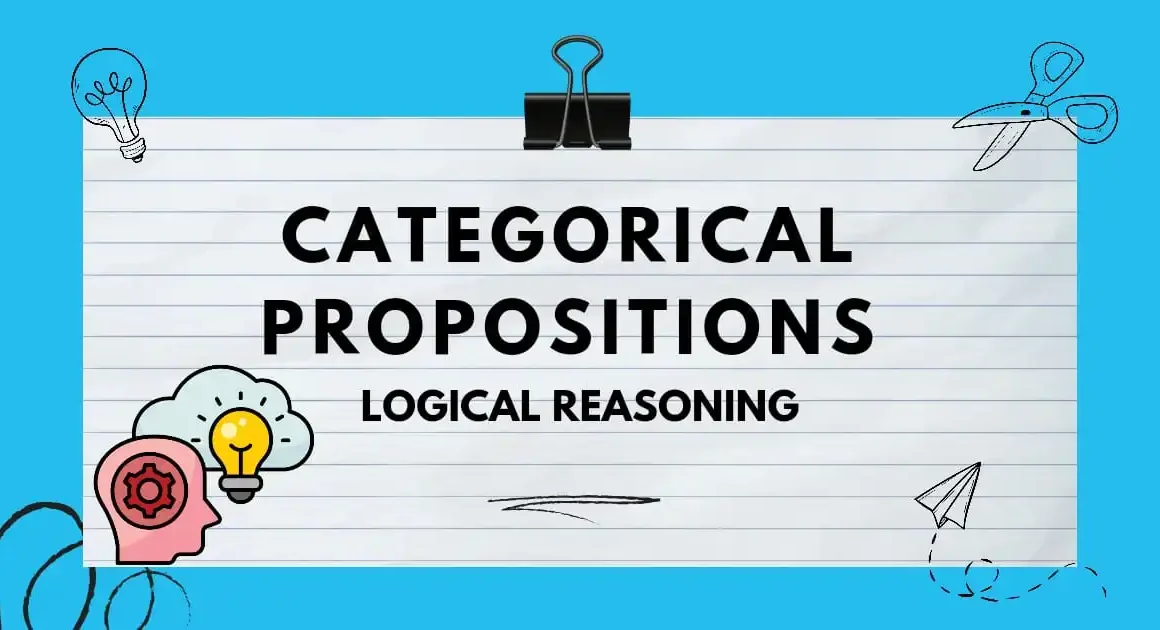Types of Research
Different types of research can be distinguished from one another according to a variety of factors, including the methodology, study design, and goal. These are a few typical categories of research:
1. ex post facto research
Ex post facto research, which translates as “after the fact” research, is a type of non-experimental research design that looks at how variables relate to one another and tries to determine causes and effects. Ex post facto investigations, in contrast to experiments, examine previous occurrences or phenomena by analysing available data or observations rather than changing factors.
The following are some essential elements of ex post facto research:
Non-experimental: Researchers rely on pre-existing data or observations rather than adjusting factors.
Retrospective: Concentrates on already-occurring previous events or occurrences.
Correlational analysis: Seek to determine associations among variables, but is unable to conclusively prove causal linkages.
Example : What is the impact of parental divorce on academic performance in high school students?
2. analytical research
Analytical research is a kind of study strategy in which a phenomenon is understood, explained, or conclusions are drawn about through the analysis and interpretation of available data or information. It is centred on looking for patterns, connections, and trends in the gathered data, frequently with the aid of statistical and mathematical methods. Gaining understanding of complicated problems and coming to well-informed conclusions through the evaluation of the material at hand are two benefits of analytical research.
Among the essential elements of analytical types of research are:
Analysis of Previous Data: Analytical research is the review of previous data. Sources: surveys, experiments, observations, interviews, and archival documents are a few possible places to find this information.
Statistical Techniques: In analytical research, statistical techniques are often used to evaluate and interpret data. Regression analysis, inferential statistics, descriptive statistics, and other quantitative methods may be used in this.
Finding Patterns and correlations: Finding patterns, correlations, or associations in the data is the main objective of analytical research. The goal of research is to comprehend the dynamics and structure of the variables being studied.
Correlation vs. Causation: While analytical research can assist in investigating correlations between variables, other research approaches, such as experimental investigations, may be necessary to prove causation.
Examples: Examining sales data and consumer behavior patterns to identify market trends and inform marketing strategies.
3. correlational research
One kind of non-experimental research design called correlational research examines the connections between two or more variables without changing them. Examining whether and to what extent changes in one variable are correlated with changes in another is the main objective. The goal of correlational research is to measure and identify the degree of statistical relationship, or correlation, between variables; it does not indicate causality.
Key characteristics of correlational type research include:
Measurement of Variables: Two or more variables are measured in correlational research. These factors can be qualitative (like gender and educational attainment) or quantitative (like height and income).
Statistical Analysis: The strength and direction of the association between variables are examined using statistical techniques like correlation coefficients. The Pearson correlation coefficient (r) is the most widely used correlation coefficient.
No Variable Manipulation: The independent variable in correlational research is not changed by the researcher. Rather, they watch and quantify the factors as they emerge organically.
Directionality: Causation is not implied by correlation. A correlation between two variables does not always imply a cause-and-effect relationship.
4. Explanatory research
Explanatory research is a type of research design that is aimed at explaining the relationships between variables. It seeks to provide a deeper understanding of the causes and effects of phenomena, events, or situations. This type of research is often used when there is a need to clarify the existing knowledge or when there is limited information on a particular topic.
The following are some essential elements of explanatory research:
focuses on cause-and-effect interactions in order to determine the variables that influence or contribute to a particular result.
uses a variety of techniques to gather data: In explanatory research, surveys, experiments, observations, and archival research are frequently employed methods.
Tests hypotheses: Using the information gathered, researchers create hypotheses concerning the relationships between variables and then test them.
Explains and forecasts future events: Explanatory study results might offer a more thorough comprehension of a phenomenon, enabling forecasts of subsequent actions or events.
5.exploratory research
Exploratory type of research, as the name implies, is the initial stage of understanding a new, poorly defined, or complex issue. Unlike explanatory research which seeks to explain “why” or “how” something happens, exploratory research aims to gain initial insights, identify key themes, and formulate research questions for further investigation.
Here are some key characteristics of exploratory research:
Unstructured and flexible: It allows for open-ended exploration, adapting approaches based on the findings. This flexibility helps researchers uncover unexpected details and refine their research focus.
Focuses on understanding the “what” and “who”: It gathers information on the nature of the problem, the individuals involved, and the surrounding context.
Utilizes diverse data collection methods: It often employs qualitative approaches like interviews, focus groups, case studies, and secondary data analysis (existing research reports, documents) to gather a broad range of perspectives.
Lays the groundwork for further research: The findings help refine research questions, develop hypotheses, and choose appropriate methodologies for future, more targeted studies.
6. Experimental Research
Experimental research is a methodical and scientific approach to inquiry that entails adjusting one or more independent variables and observing the resultant effects on dependent variables under carefully monitored circumstances. It is regarded as the gold standard for determining cause-and-effect linkages, which makes it an effective tool in a number of domains,
Here are some key characteristics of experimental research:
- Manipulation: The researcher actively changes or manipulates the independent variable(s) to assess its impact on the dependent variable(s).
- Control: The experiment is designed to control for extraneous variables, which are any factors other than the independent variable that could affect the dependent variable. This helps to isolate the specific effect of the independent variable.
- Randomization: In some types of experiments, participants or subjects are randomly assigned to different groups (control and experimental) to ensure that any observed differences are due to the manipulated variable and not pre-existing group differences.
- Measurement: The dependent variable(s) is carefully measured to quantify the observed effects of the independent variable(s).
Classification of Research on the basis of application
1. Fundamental/Pure/Basis Research
Pure research—also referred to as basic or fundamental research—is carried out only for the sake of knowledge acquisition, with no immediate plans to put the findings into practice. This kind of study is not immediately focused on finding solutions to real-world issues; rather, it is driven by intellectual curiosity. It is common for theories and concepts to be developed as a result of pure study. Although the results of pure study might not be immediately useful in resolving practical problems, they can nonetheless provide a solid understanding. Contrarily, applied research bridges the gap between theory and real-world solutions by using these theoretical concepts to tackle particular real-world issues or challenges in a variety of domains.
2. Applied Research
Applied research is conducted with the explicit aim of finding practical solutions to real-life problems that demand action or a specific position. This kind of research is distinguished by its goal of using the findings to address particular problems in a society or organization. Applied research frequently expands on the theories and concepts produced by pure research, in contrast to pure research, which is motivated by intellectual curiosity and concentrates on theoretical knowledge. Applied research seeks to immediately address tangible issues and obstacles in the real world by putting these discoveries to use.
Examples of applied research:
- Developing new medical treatments to cure diseases.
- Creating marketing campaigns to target specific demographics.
- Designing educational programs to improve student learning outcomes.
- Testing the effectiveness of new agricultural techniques to increase crop yields.
| Applied Research | FundamentalResearch |
| Original type of research | Based on pure research |
| It is related with generalization andformulation of theory | It is related with application of theories for finding solution |
| Knowledge oriented | Problem oriented |
| It studies any problems or aspects in the universe | It studies problems with social consequence |
| It tries to explain why things happen | It tries to explain how things can be changed |
Classification of Research types on the basis of Logic/Approach
1. Inductive research
Inductive types of research is characterized by the utilization of inductive reasoning to formulate theories. It is the process of moving from the particular to the general by moving from detailed observations to more generalisations. This method is frequently used in situations when there is no pre-existing theory to test and there is little to no literature on the subject at hand.
Steps in the inductive approach: three
Observation: The researcher closely monitors and records a range of phenomena associated with the subject matter.
Finding patterns: The researcher carefully examines the collected data to look for any recurrent themes, tendencies, or connections between them.
Generalisation: The researcher formulates a general theory or explanation in an effort to explain the observed events, based on the patterns that have been found.
2.Deductive
- Deductive Research Focus:
- Deductive research involves the application of deductive reasoning to verify a theory or expand our understanding of a particular phenomenon.
- Starting Point with a Theory:
- Deductive reasoning, in this context, begins with a pre-existing theory or hypothesis.
- This theory could be the outcome of prior inductive research, where general patterns or observations were identified.
- Movement from General to Specific:
- The deductive process moves from the general to the specific. The researcher starts with a broad theory and then derives specific predictions or observations that can be tested.
- Testing and Verification:
- The core purpose of deductive research is to test and verify the theory by collecting specific observations or data.
- The collected data is analyzed to determine whether it aligns with the predictions derived from the theory.
Classification of Research types on the basis of process & data
1. Quantitative Research
- Systematic Investigation:
- Both quantitative research and the deductive approach involve a systematic investigation of phenomena.
- In quantitative research, this systematic process includes the careful design of studies, data collection methods, and analysis techniques.
- Gathering Quantifiable Data:
- Quantitative research focuses on gathering quantifiable data, which means collecting numerical information that can be measured and analyzed.
- Similarly, deductive reasoning in research involves formulating specific hypotheses and predictions that can be tested through the collection of data.
- Statistical or Mathematical Techniques:
- A key aspect of quantitative research is the application of statistical or mathematical techniques to analyze data.
- Deductive reasoning, when applied in the context of quantitative research, often involves the use of statistical methods to assess the relationship between variables and test hypotheses.
- Deductive Approach in Quantitative Research:
- Quantitative research frequently adopts a deductive approach. It starts with a predefined hypothesis or theory that the researcher aims to test using empirical data.
- The deductive reasoning process in quantitative research involves making specific predictions based on the theory and then collecting and analyzing data to confirm or refute those predictions.
“Prepare for the UGC mock test to enhance your skills and excel in your aspirations.”
2. Qualitative Research
- Qualitative types of Research Defined:
- Qualitative research is a type of research that focuses on gathering and interpreting non-numerical data.
- Unlike quantitative research, which deals with measurable quantities, qualitative research involves exploring and understanding the nuances of human experiences, beliefs, attitudes, behaviors, and interactions.
- Non-Numerical Data Emphasis:
- A defining feature of qualitative research is its reliance on non-numerical data. This includes textual, visual, or audio data that provides insights into the subjective aspects of the research topic.
- Understanding Human Phenomena:
- Qualitative research is often employed to gain a deeper understanding of people’s beliefs, experiences, attitudes, behaviors, and social interactions.
- It aims to uncover the richness and complexity of human phenomena that may not be easily captured through quantitative measures.
- Observation to Theoretical Position:
- In qualitative research, the process often begins with observation. Researchers immerse themselves in the context of study, engaging with the subject matter through various methods such as interviews, focus groups, or participant observation.
- The goal is to move from these observations to developing a theoretical position or framework that explains and interprets the collected data.
What Is Research? Objectives , Characteristics, And Process
Classification of Research types on the basis of Idea or concept
1. Conceptual Research
- Nature of Conceptual Research:
- Conceptual research is primarily concerned with the exploration and development of concepts.
- Unlike empirical research that relies on observable and measurable data, conceptual research deals with abstract ideas, theories, and philosophical constructs.
- Philosophers and Thinkers:
- Philosophers and thinkers frequently engage in conceptual research to contribute to the evolution of ideas, theories, and intellectual discourse.
- This form of research allows them to delve into the abstract realms of thought and explore the fundamental nature of concepts.
- Developing New Concepts:
- One primary purpose of conceptual research is to generate new concepts. Philosophers may introduce novel ideas, theories, or frameworks that contribute to the intellectual landscape.
- This process involves creative thinking and a deep understanding of the subject matter.
2. Empirical Research
- Observation and Measurement:
- Empirical research involves the systematic observation and measurement of real-world phenomena.
- Researchers gather data by directly observing and measuring events, behaviors, or conditions, aiming for a comprehensive understanding of the subject under investigation.
- Real-Life Experience:
- The basis of empirical research is real-life experience. Researchers immerse themselves in the context of study, actively observing and collecting data from the actual occurrences of the phenomena being investigated.
- Directly Experienced by the Researcher:
- Empirical type of research requires the researcher to directly experience the phenomena being studied. This direct engagement ensures that the data collected is firsthand and not mediated through secondary sources.
- Data Collection Through Observation:
- Researchers use various methods, including systematic observation, surveys, experiments, or case studies, to collect empirical data.
- These methods involve firsthand interaction with the subject matter, allowing for the collection of observable and measurable information.
Access UGC NET previous year questions by clicking here
Other Types of Research
1. Action Research
- Applied Research Nature:
- It is described in the context of action research, is a type of research that is concerned with addressing practical issues and finding solutions to immediate problems.
- Aiming at Immediate Solutions:
- The primary goal of applied research, such as action research, is to find solutions for immediate problems facing a society or a specific context.
- Unlike some forms of research that may have long-term goals, applied research is focused on making a tangible impact in the present.
- Focus on Changing the Present Situation:
- Applied type of research, especially in the form of action research, is geared towards changing the current situation or addressing existing problems.
- Researchers engage with real-world issues and actively seek ways to improve or transform the conditions they are studying.




